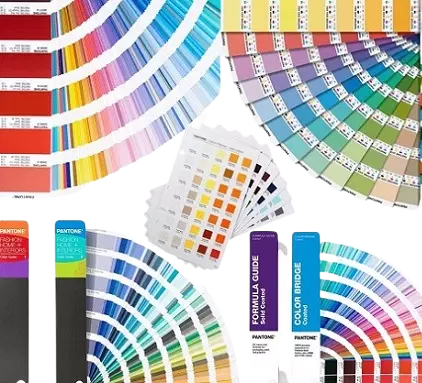Color Evaluation in Textile and Apparel: The Application of Pantone
Introduction: Pantone is a color-matching system in the standard form. It has occupied the fashion and apparel industry through the Pantone swatch card. The Pantone swatch card is a creation on a double-layered fabric. Moreover, it gets formulated to ensure color fastness and color consistency. There are swatch cards available for all colors. Specifically, fibers- cotton, nylon, and polyester. Each material has distinctive properties and a different color range. Pantone is a standard of color matching, used for color evaluation all over the world. Pantone was founded in 1962, but it is initiated use for color matching in 1963, now used everywhere as a standard of color-matching evaluation. Color evaluation’s best practice is to follow the Pantone book and its application is everywhere in the world, not only in Textile.
Pantone Textiles Making
The color contains the FHI system that uses dyestuffs and is globally available. The FHI system optimizes for color constancy and color fastness. It also ensures a 5-step quality process. It occurs with a view to ensuring color accuracy at each stage of production and packing. Pantone swatch card differs from the FHI productions. It ensures the definitive color standard. Every Pantone colors have a Pantone number which follows universally as the color standard for color evaluation.
What is Pantone Color Guide?
In Pantone, there is a code number with a view to identifying the color. The Pantone color guide has a unique or distinct code number. It is getting used in the textile industry for color matching with dyed samples. It happens after doing the fabric coloration process.
Historical Background of Pantone
Pantone, in 1962, was only a sole company making color cards for furnishing companies. Getting bought by “Lawrence Herbert”, Pantone had been a grateful employee of the company. Since then, the Pantone color guide has been a very popular color-matching system
The Significance of the Pantone Color Guide in the Textile Industry
The Pantone color guide has been the silver lining in the dark clouds for fabric coloration. It will help you address the exact Pantone number. It works instead of the color name. The Pantone book has made it easier to get ideas for colors. It happens before the dyeing and matching colors including the sample. For single color or other color combinations, the textile industry needs a Pantone formula guide. It is also to achieve the required colors. The availability of the Pantone color guide helps the textile industry to play with colors. The color guide is also gets used by high-end brands. It happens during the manufacturing of curtains and bedsheets. The color guide plays a significant role in fabric dyeing, printing, and matching shades.

Types of Pantone Color Guides for Textile
The Pantone color guide offers two types- TCX and TPX. These get designed from the Pantone color system of Textiles. They are:
- TCX (Textile Color on Cotton): In each of the colors, TCX is the colorful pure “cotton swatch.” It seems to be a passport guide and chipset. TCX Pantone books are cotton swatch that is expensive.
- TPX or Textile Color on Paper: The Pantone color guide consists of the Paper swatch instead of the cotton swatch. Here, each swatch gets colored in a unique color shape.
Although both TCX and TPX are color standards. But their designs are separate from each other based on the purpose. TCX also means the Textile Cotton eXtend.
- TPG: There is another paper edition named TPG. It gets used for Pantone color standards production in 100% paper content.
Steps to Inspecting Color in Manufacturing
The most fun part is choosing colors to design. But how to apply colors in manufacturing is something we need to know. There are some easy processes. For instances:
- Check whether the color matching system gets aligned with the factory’s preference
- Make sure the sample matches prefer with the color standard
- Checking the samples in an industry-preferred lightbox.
Applications of Pantone
- The Use of Pantone Numbers: Pantone numbers are recognizable as TCX and TPX. These both numbers reflect the colorant features. Among the 3 color attributes- Value, Chroma, and Hue, the Pantone number consists of six digits. The first 2 digits express the color lightness. Meanwhile, the middle 2 digits express the Hue. Hue means red, yellow, green, and blue. The last two digits are Chroma which represents dullness and vividness.
- Printing on Any Object: With the reference number, the Pantone color guide becomes useful in printing.
Enabling Critical Color Decisions: Pantone color standards enable critical color decisions in every stage of the workflow. Also, the color standard provides customization and brand identity.
Conclusion: In the textile industry, the Pantone color guide is there for color evaluation. In the dyeing and printing section, it is important to maintain shade matching. A Pantone color standard helps choose the right color by keeping the color consistent. If you lack access to TCX, TPX, or TPG with the textile match, the uncoated Pantone Solid.
- You may love to read: Use of Lightbox color cabinet in the Textile and Apparel Industry
